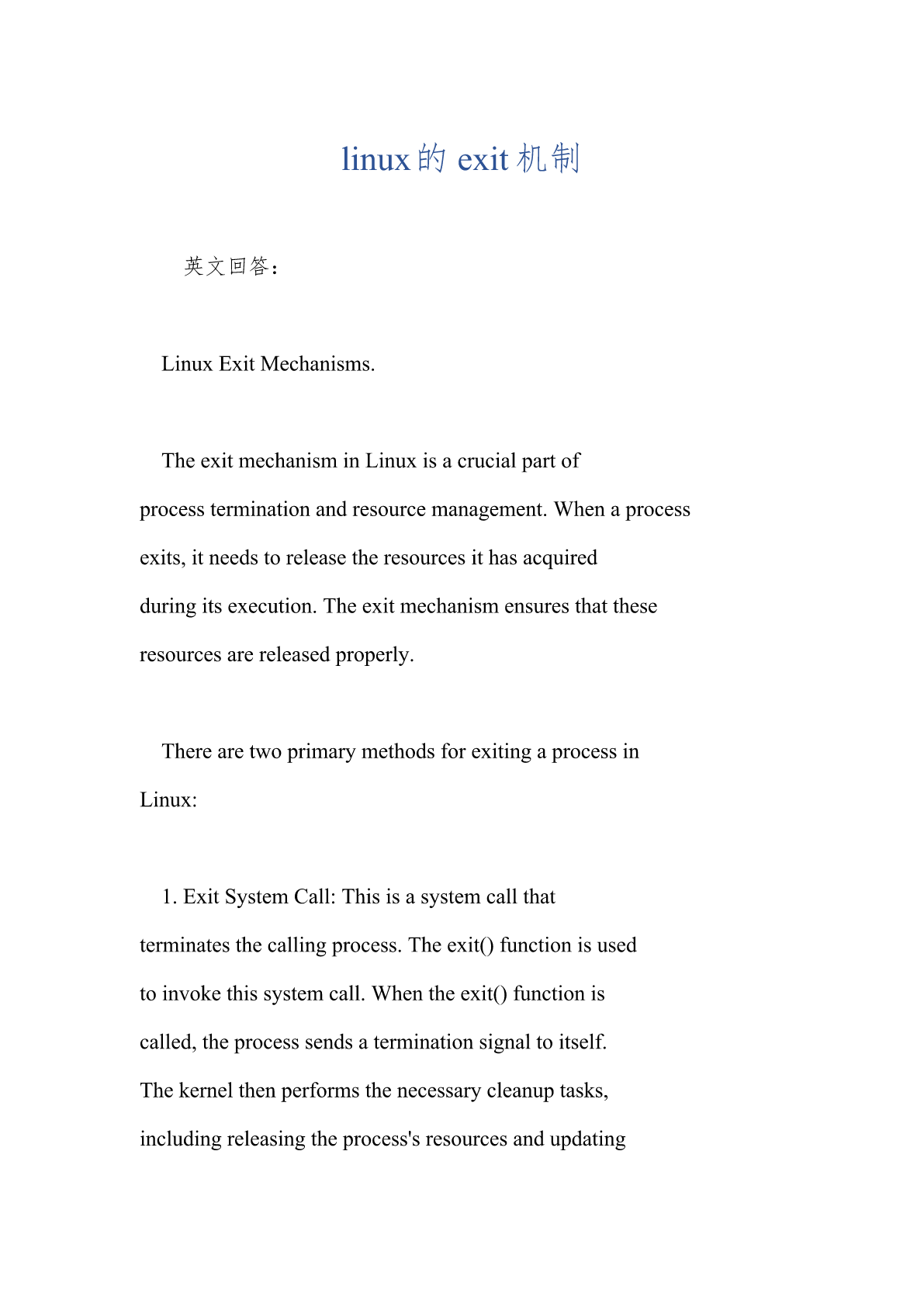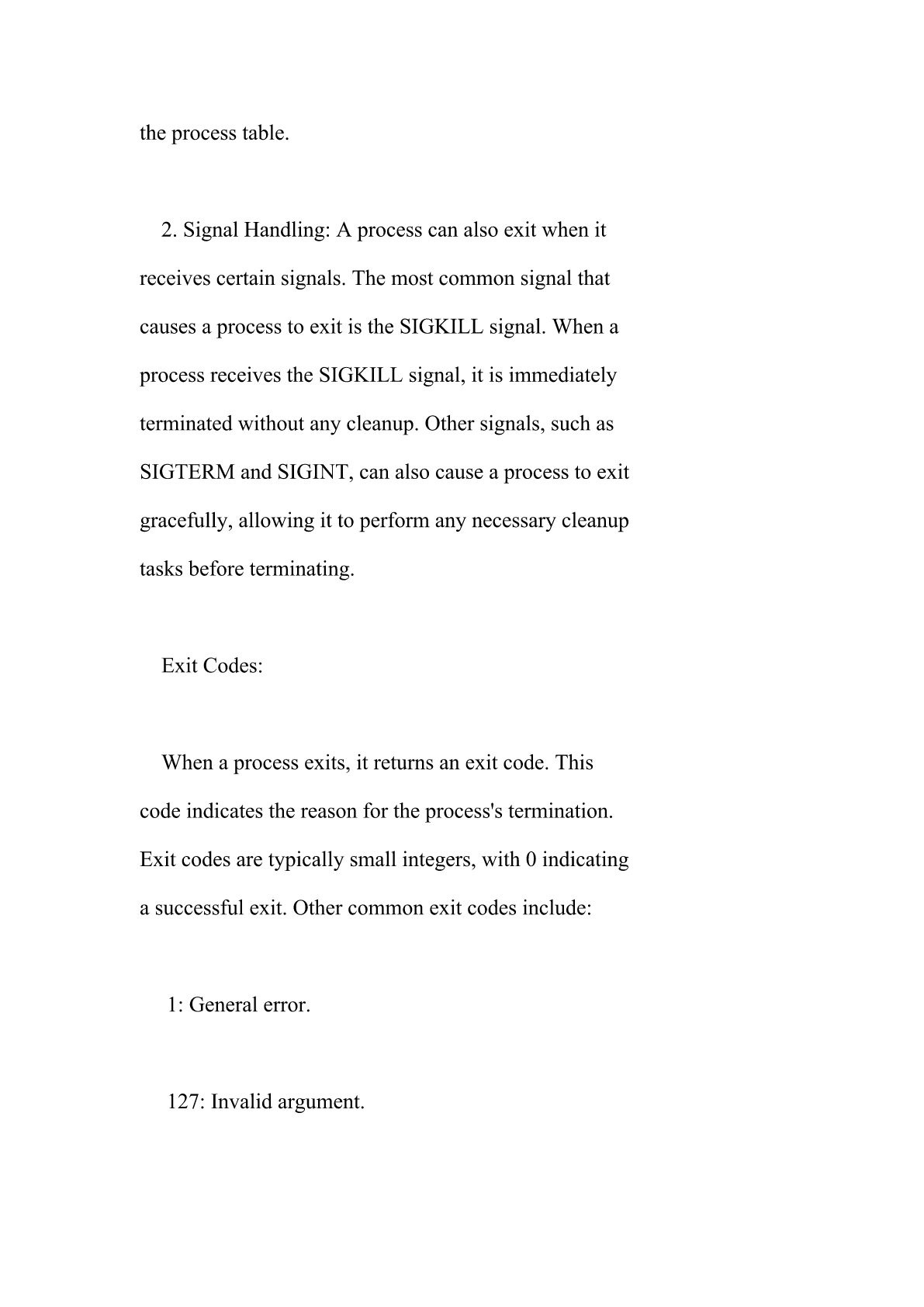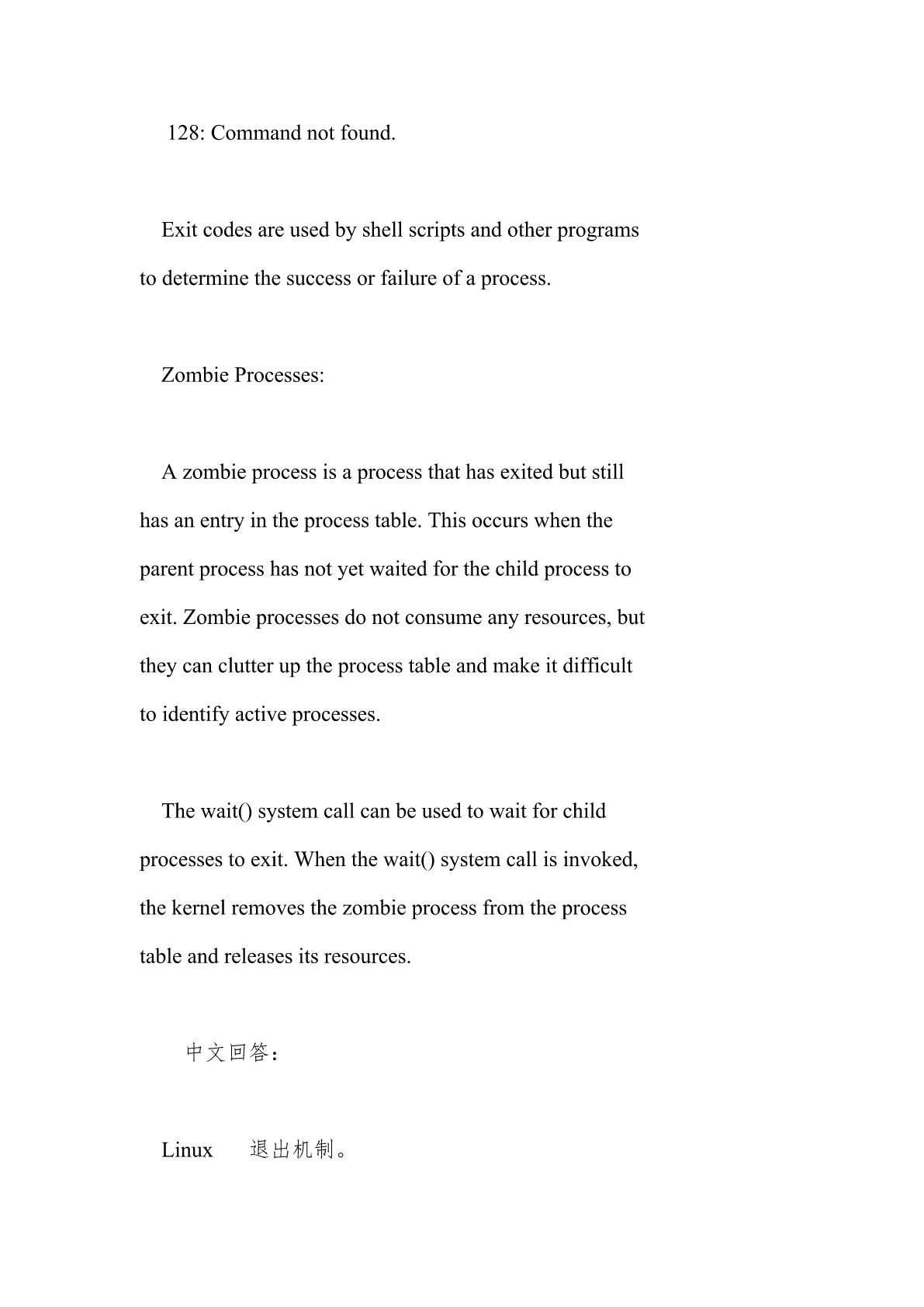
linux的exit机制.pdf

文库****品店





在线预览结束,喜欢就下载吧,查找使用更方便
相关资料

linux的exit机制.pdf
linux的exit机制英文回答:LinuxExitMechanisms.TheexitmechanisminLinuxisacrucialpartofprocessterminationandresourcemanagement.Whenaprocessexits,itneedstoreleasetheresourcesithasacquiredduringitsexecution.Theexitmechanismensuresthattheseresourcesarereleasedproperly.

Linux系统命令中exit与exit的区别.docx
Linux系统命令中exit与exit的区别关于Linux系统命令中exit与exit的区别注:exit()就是退出,传入的参数是程序退出时的状态码,0表示正常退出,其他表示非正常退出,一般都用-1或者1,标准C里有EXIT_SUCCESS和EXIT_FAILURE两个宏,用exit(EXIT_SUCCESS);可读性比较好一点。作为系统调用而言,_exit和exit是一对孪生兄弟,它们究竟相似到什么程度,我们可以从Linux的源码中找到答案:#define__NR__exit__NR_exit/*摘自文

Linux系统命令中exit与exit的区别.docx
Linux系统命令中exit与exit的区别关于Linux系统命令中exit与exit的区别注:exit()就是退出,传入的参数是程序退出时的状态码,0表示正常退出,其他表示非正常退出,一般都用-1或者1,标准C里有EXIT_SUCCESS和EXIT_FAILURE两个宏,用exit(EXIT_SUCCESS);可读性比较好一点。作为系统调用而言,_exit和exit是一对孪生兄弟,它们究竟相似到什么程度,我们可以从Linux的源码中找到答案:#define__NR__exit__NR_exit/*摘自文

Linux系统命令中exit与exit的区别.docx
Linux系统命令中exit与exit的区别关于Linux系统命令中exit与exit的区别注:exit()就是退出,传入的参数是程序退出时的状态码,0表示正常退出,其他表示非正常退出,一般都用-1或者1,标准C里有EXIT_SUCCESS和EXIT_FAILURE两个宏,用exit(EXIT_SUCCESS);可读性比较好一点。作为系统调用而言,_exit和exit是一对孪生兄弟,它们究竟相似到什么程度,我们可以从Linux的源码中找到答案:#define__NR__exit__NR_exit/*摘自文

Linux内存机制的详解.docx
Linux内存机制的详解关于Linux内存机制的详解一.我们先来查看一个内存使用的例子:[oracle@db1~]$free-mtotalusedfreesharedbufferscachedMem:72433670755357055862221-/+buffers/cache:429568138Swap:720969172004上述结果显示了67075M的used,但是(-/+buffers/cache)减去buffers和cache的结果可以看到,所以当前进程实际占用内存是4296M。可以这么理解:在
